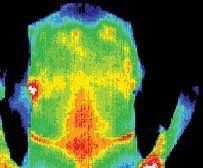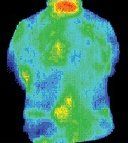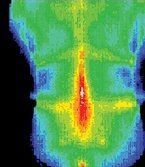Whether you accept it, avoid it or live somewhere in between, insurance coverage has become a defining issue for our profession. Patients increasingly expect to use their benefits, practitioners want to be compensated fairly for their time and expertise, and the system itself remains – at best – fragmented. The encouraging news is that coverage has expanded in meaningful ways. The challenging news is that reimbursement, across the board, remains inadequate.
Old Pain, New Pain, Hot Pain and Cold Pain
Editor's note: The photos in this article are taken from chapter 3 of Dr. Lo's forthcoming book, Acupuncture: Quantum and Supreme Health.
When patients present in the clinic and complain about pain, they generally know the location of their pain. It can be confirmed easily by the acupuncturist by pressing on the spots where patients feel painful. These areas are generally confirmed using thermograms taken by an infrared imaging system. There are two very different kinds of pain, however. One kind is revealed as having a much higher temperature than the surrounding, normal (non-painful) area; this is referred to as hot pain. Another kind is revealed by a much lower temperature than the surrounding area, and is called cold pain. Curing hot pain appears to be easier than curing cold pain.
Another common feature among patients who complain of pain is that they generally seem to tell the acupuncturist about any new pains that have developed recently. Old pain that has persisted for years often isn't mentioned by the patient in the first round of discussions. However, the old pain may be more important. If left untreated, it may be the source of continuous pain in a different area later on. A good acupuncturist will always look for old pain; infrared imaging can help a practitioner locate these areas that are not mentioned by the paient.
Let's look at the history of two pain patients.
Case #1
This patient was a woman in her 40s who complained of lower back pain. The thermal image of her back (below) revealed three problem areas. The posterior neck area was cold (shown as blue in the uppermost section of the photo). The left middle back had a hot area (shown as a white spot), as did the spinal cord area on the lower back (shown in red). Upon questioning, the patient confirmed a longstanding problem in her neck, which cam and went away periodically. She was involved in an automobile accident two years ago, which caused a lump on the left middle back. Acupuncture was administered; massage and moxibustion were applied to the neck region.

|

|
After treatment, the patient's symptoms were reduced considerably on these problem areas. The cold blue area of the neck became warm and red. The hot white spot on the left middle back disappeared, and the hot red area of the back became colder. Repeated treatments were recommended to cure all of these areas.
Case #2
This case illustrates that the source of pain often originates elsewhere. The patient, a woman, had been in pain for over 10 years, and her son, a kidney specialist, advised her not to take any more painkillers for fear she might have kidney failure. She came to us as a last resort.

|

|
We found that although she complained of right leg, the origin of her pain was around the spinal cord. The doctor treated her with electroacupuncture at a frequency of 2 Hz. After a 20-minute session, the area showed great improvement (see below). The maximum temperature dropped from 39.4 C to 37.17 C, a decrease of 2.23 C, and the pain subsided.



